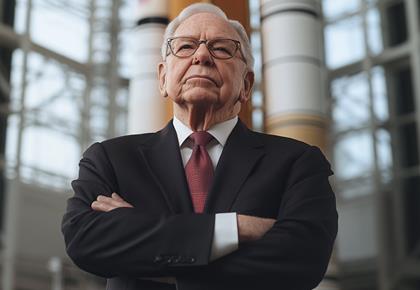Table of Contents
- Cultivate a Curious Mindset
- Diversify Your Information Sources
- Embrace Failures as Learning Opportunities
- Invest in Continuous Education
- Collaborate and Network
- Stay Open to Disruption
- Implement Rapid Prototyping
- Encourage a Culture of Innovation
- Stay Grounded in Customer Needs
- Incorporate Technological Advancements
- Conclusion
Cultivate a Curious Mindset
Cultivating a curious mindset is more than just a desirable trait; it's a necessity. The drive to continuously learn ensures that individuals remain adaptable, responsive, and proactive in the face of change. While achievements and qualifications are important milestones in one's professional journey, they shouldn't be endpoints.Every industry, technology, and field of study is in a constant state of flux, offering endless opportunities to expand one's knowledge. Alongside this thirst for learning, the courage to ask questions is equally crucial.
By challenging the status quo and delving into the 'whys' and 'hows' of established norms, we open doors to innovative solutions and fresh perspectives.
To illustrate the power of a curious mindset, let's consider the story of Sir Tim Berners-Lee while working at CERN in the late 1980s, Berners-Lee found himself intrigued by the challenge of retrieving information from connected yet different computers. Instead of settling for the existing methods, he relentlessly questioned the current systems and asked, "How can we do this better?"
This curiosity led him to invent the World Wide Web, a tool that revolutionized not only how we access information but also how we connect, work, and live in today's digital age.
Berners-Lee's insatiable curiosity and his penchant for questioning the norm brought about a groundbreaking innovation that reshaped our world.
Diversify Your Information Sources
The quality and diversity of what we consume significantly influence our understanding, creativity, and problem-solving abilities. Expanding one's reading horizons is fundamental in this regard. Academic journals provide in-depth analyses and emerging theories, tech blogs give a pulse on the latest in the world of technology, and fiction expands our imagination, empathy, and perspective.Each genre and source equips us with a unique lens through which we can view the world, ensuring a holistic and informed perspective.
Additionally, the digital age's passive consumption is not enough. Active participation in seminars and workshops acts as a catalyst for real-time learning. Networking with contemporaries and experts in these settings offers a dual benefit: gaining firsthand knowledge of cutting-edge trends and establishing valuable connections that can pave the way for future collaborations.
A compelling real-world example of the benefits of diversifying information sources can be seen in the journey of Steve Jobs. The co-founder of Apple was known for his broad set of interests, from calligraphy to Zen Buddhism. Jobs often credited the design and aesthetics of Apple products to the calligraphy classes he attended in college, noting how this seemingly unrelated subject influenced the typography and user-friendly interfaces of Apple computers.
By immersing himself in varied disciplines and continuously seeking knowledge from diverse sources, Jobs was able to blend technology with art and humanities, leading to the creation of some of the most iconic and user-centric products in tech history.
Embrace Failures as Learning Opportunities
The journey to innovation is seldom a straight path. It is often punctuated with missteps, failures, and course corrections. Those who truly succeed understand the inherent value of these setbacks. Adopting a growth mindset transforms the perception of failure from a discouraging end to an enlightening beginning.Failures become treasure troves of lessons, providing insights into what doesn't work and shining a light on potential avenues for improvement.
Fostering a culture of experimentation is pivotal. By giving precedence to trying and testing over playing it safe, individuals and organizations can stumble upon serendipitous discoveries and innovations that may have remained elusive in a more risk-averse environment.
The story of James Dyson stands as a school example to the power of embracing failures. While developing his revolutionary vacuum cleaner, Dyson went through 5,127 prototypes over 15 years, each one a lesson in what needed to be improved.
Many would have seen these numerous iterations as a pure failure. However, Dyson viewed them as necessary steps in the journey to perfection. His persistence and willingness to learn from each prototype eventually led to the creation of the first bagless vacuum cleaner using cyclonic separation—a groundbreaking innovation in the industry.
Dyson's journey underscores the importance of seeing failures not as roadblocks, but as stepping stones to success.
Invest in Continuous Education
As technologies advance, industries shift, and societal needs change, the skills and knowledge that were once deemed sufficient can quickly become obsolete. Staying updated with emerging skills is not just about keeping pace with the world, but about being at the forefront, ready to leverage new tools, methodologies, and strategies to innovate and excel.Equally important is the focus on collective growth. By investing in the continuous education of one's team, organizations ensure that they harness the collective intelligence, creativity, and potential of their members, paving the way for groundbreaking solutions and enhanced productivity.
A shining example of successfully continuous education can be observed in the ethos of tech giant Google. Recognizing the rapid changes in the tech landscape, Google actively encourages its employees to engage in "20% projects," allowing them to spend one day a week on side projects that aren't necessarily in their job descriptions.
This not only promotes innovation but also ensures that Googlers are constantly learning and exploring new domains. Products like Gmail and Google News were born out of these 20% projects.
By promoting an environment where continuous learning and experimentation are ingrained into the company culture, Google has managed to stay at the cutting edge of technology and innovation.
Collaborate and Network
No individual or organization exists in isolation. Collaboration and networking have emerged as powerful tools to broaden horizons, tap into a reservoir of diverse knowledge, and catalyze innovation. By connecting with professionals from varied backgrounds and industries, one can unearth fresh perspectives and solutions, leading to cross-industry innovations that may not have been conceivable within a singular domain.The significance of virtual networking platforms cannot be overstated. Platforms like LinkedIn, X/Twitter, and various industry-specific forums serve as melting pots of ideas, discussions, and collaborations, enabling professionals to learn, share, and co-create in ways that transcend geographical and disciplinary boundaries.
The formation of the groundbreaking partnership between Nike and Apple stands as a testament to the power of collaboration and networking. These giants from seemingly disparate industries—sportswear and technology—came together to create the Nike+ iPod system.
This collaboration combined Nike's expertise in athletic gear with Apple's prowess in tech, resulting in a product that transformed the fitness tracking landscape. Users could sync their Nike shoes with their iPods, monitoring their runs with real-time feedback.
This innovation not only provided a unique value proposition to customers but also showcased the potential of cross-industry collaborations borne out of effective networking and a willingness to think outside the box.
Stay Open to Disruption
Clinging to conventional methods and long-standing strategies can be a recipe for obsolescence. To truly thrive and remain competitive, individuals and organizations must be willing to disrupt their own paradigms before external forces do. By proactively seeking opportunities to re-evaluate, refine, and even overhaul existing models, one can preempt potential challenges and seize emergent opportunities.This proactive stance towards disruption ensures sustained relevance in an evolving marketplace. Alongside this, adaptability becomes paramount.
As the only constant in today's dynamic environment is change itself, the ability to pivot, recalibrate, and respond swiftly to shifts can mark the difference between lasting success and gradual decline.
Netflix offers a well-known real-world example of a company that understood the importance of staying open to disruption. Starting as a DVD rental-by-mail service, Netflix could have comfortably remained in this niche. By recognizing the growing potential of online streaming and the changing consumption patterns of its audience, Netflix chose to disrupt itself.
The company boldly transitioned to a streaming model, investing heavily in content creation and technology. This foresight and adaptability not only allowed Netflix to sidestep the fate that befell traditional video rental stores but also positioned it as a global leader in entertainment.
By being attuned to industry shifts and willing to disrupt its own successful model, Netflix showcased the essence of adaptability and the power of embracing change.
Implement Rapid Prototyping
When we talk innovation, speed and agility often dictate success. Rapid prototyping emerges as a critical strategy in this context, allowing creators to transform abstract ideas into tangible forms quickly. By developing a minimal viable product (MVP), innovators can test the viability and appeal of their concepts without committing extensive resources.This MVP acts as a preliminary model, offering stakeholders a glimpse of the final product's potential and enabling early-stage adjustments. Furthermore, this prototype-centric approach thrives on feedback. By releasing the MVP to a select audience or even the broader market, innovators can gather invaluable insights, criticisms, and suggestions.
This iterative process, driven by real-world input, refines the product at every stage, ensuring that the end result is not just functional but truly resonates with its intended users.
The rise of the social media platform Twitter serves as an example of the benefits of rapid prototyping. Initially, Twitter was conceived as an SMS-based platform named "twttr" during a day-long brainstorming session by the podcasting company Odeo.
Recognizing the potential of the idea, but unsure of its complete form, the team rapidly developed an MVP. Feedback and iterations over time shaped Twitter into the microblogging powerhouse we recognize today. Had the team sought perfection before launch or delayed its introduction awaiting a more 'complete' version, they might have missed key insights or timely entry into the market.
Instead, their commitment to rapid prototyping and iterative refinement, based on real-world usage and feedback, propelled Twitter to global prominence.
Encourage a Culture of Innovation
At the heart of every successful organization lies a pervasive culture of innovation. Such a culture doesn't merely react to change but actively seeks and champions it. Central to this ethos is the act of rewarding creativity.By acknowledging and celebrating inventive thoughts and endeavors, irrespective of their immediate outcomes, organizations underscore the primacy of the innovation process over the end product. This fosters a climate where risk-taking and out-of-the-box thinking are not just accepted but actively encouraged.
Equally crucial is the cultivation of open communication. An environment where team members, irrespective of their position or tenure, feel empowered to share, discuss, and even contest new ideas is one that is primed for continuous evolution and growth.
It's not just about having innovative individuals; it's about creating a collective innovative spirit.
An example of encouraging an innovative culture can be found in the approach of 3M, the multinational conglomerate. Over the years, 3M has introduced a policy known as the "15% rule," allowing its employees to use up to 15% of their paid time to chase their own work-related projects, even if they fall outside of their regular responsibilities.
This freedom has not only empowered employees to pursue their passions but has also led to breakthrough products, most famously, the Post-it Note. This small, sticky piece of innovation was the result of a failed attempt to create a super-strong adhesive.
Instead of discarding the weaker adhesive, the potential for a repositionable note was recognized, leading to a now-ubiquitous product. Through its policies and environment, 3M showcases the profound impacts of nurturing and valuing a culture of innovation.
Stay Grounded in Customer Needs
Innovation, at its core, should not only be a pursuit of novelty but should be deeply anchored in solving real-world problems and enhancing user experiences. This user-centric approach to innovation is grounded in a thorough understanding of customer needs and aspirations. Regularly soliciting feedback is crucial to this endeavor.By tuning into the pain points, preferences, and aspirations of the customer base, organizations can uncover opportunities for disruptive solutions that resonate deeply with the market. Furthermore, an astute observation of market shifts and trends ensures that businesses aren't just reacting to present demands but are also anticipating future needs.
This proactive stance can position a brand as a leader, staying consistently ahead of the curve, and crafting solutions that align seamlessly with evolving consumer expectations.
A classic example of an organization embodying this principle is Apple. The conception of the iPod, and subsequently, the iTunes store, was rooted in a deep understanding of the consumer pain point: the rising demand for digital music and the lack of an integrated, user-friendly platform to access it. Instead of merely creating another MP3 player, Apple observed the broader market shift, understanding that consumers would soon want a consolidated platform for both hardware (iPod) and software (iTunes).
This foresight, combined with a relentless focus on user experience, led to a disruptive solution that not only addressed immediate needs but also anticipated and shaped future consumption patterns. By staying grounded in customer needs and keenly observing market dynamics, Apple consistently crafts innovations that resonate globally.
Incorporate Technological Advancements
Staying on the level of technological advancements is not just an advantage; it's a necessity. Embracing emerging technologies, be it AI, blockchain, biotech, or any other frontier, can propel organizations ahead of the curve, equipping them with tools and insights to serve their markets more efficiently and innovatively.An investment in the latest tech isn't just about acquiring new tools; it's about embedding a culture of continuous evolution, ensuring that the organization remains agile and responsive to the changing tides of the digital era.
Furthermore, partnerships with startups and established tech companies can be a strategic move. Such collaborations not only provide access to specialized knowledge and tools but also infuse fresh perspectives and energy into projects, leading to mutually beneficial growth and groundbreaking solutions.
A famous illustration of leveraging technological advancements can be observed in the automotive industry, with Tesla at the helm. Tesla's mission to accelerate the world's transition to sustainable energy was not just about producing electric vehicles (EVs); it was about redefining the entire automotive experience.
As a result, they heavily invested in a variety of emerging technologies. From advanced battery technology, which extended the range of their EVs, to their proprietary Autopilot system, which integrates machine learning and AI to offer semi-autonomous driving capabilities, Tesla's commitment to technology is evident.
Moreover, Tesla's partnership approach with tech companies has been notable. Their collaboration with Panasonic, for instance, facilitated the production of innovative battery cells tailored for their vehicles. Through such integrations and partnerships, Tesla has positioned itself not just as a car manufacturer, but as a tech-driven mobility solutions provider.
The company's continuous embrace of technological advancements has not only made them a market leader but has also pushed traditional automakers to accelerate their own innovations in the electric and autonomous driving domains.
Tesla's trajectory underscores the transformative potential of integrating cutting-edge technologies into traditional industries.
Conclusion
Staying on the cutting-edge of innovation is not about a single ingredient but a blend of several. It requires an insatiable curiosity, a willingness to embrace change, a commitment to lifelong learning, and the courage to face failures head-on. In the words of Peter Drucker, "The best way to predict the future is to create it." So, arm yourself with this secret sauce and start shaping the innovations of tomorrow.Leave a comment
Leave a comment, an idea, a related blog post on X (Twitter)X (Twitter)

Early revenue is a liar. It tricks you into overspending, overhiring, and overestimating your success.
Learn why startups crumble in Year 2 — and how to stay alive.

What if the secret to scaling your startup isn’t about raising more funding, but unlocking the hidden goldmine already in your business? Uncover the hidden revenue streams hiding in plain sight.

Wonder how Trump’s takeover talk might unravel the Canal’s lucrative income stream? Brace yourself for potential ripples hitting everything from fuel prices to supermarket shelves

Steal like an entrepreneur (ethically)! Why reinvent the wheel when you can improve it? This approach saves you time, money, and countless headaches while keeping you ahead in the game.

Competing against businesses with larger budgets can feel like a David-and-Goliath battle. But the key to success isn’t about matching their spending — it’s about outthinking them.

Discover HEICO: The hidden aerospace jewel in Buffett's multi-billion-dollar portfolio!

